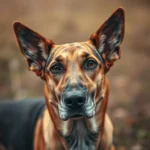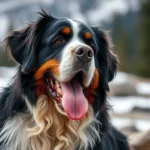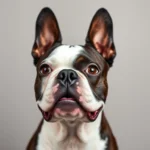
Introduction
The world of dog breeds is incredibly diverse, with each breed possessing unique characteristics, temperaments, and histories. Understanding different breeds is essential for potential dog owners, as it helps in selecting a companion that fits one’s lifestyle and preferences. Among these fascinating breeds is the Utonagan, a dog that captivates many with its wolf-like appearance and friendly demeanor.
The Utonagan breed, developed in the late 20th century, is known for its striking looks and sociable nature. This article aims to provide comprehensive information about the Utonagan, covering its history, physical characteristics, temperament, care, health, and its place in popular culture.
History of the Utonagan
Origins and Development
The Utonagan breed was developed in the 1980s in the United Kingdom. Its creation was the result of a deliberate breeding program that aimed to produce a dog that closely resembled a wolf but possessed a friendly and gentle temperament. The breed was primarily developed by crossbreeding three notable breeds: the Siberian Husky, the Alaskan Malamute, and the German Shepherd. This combination aimed to retain the majestic appearance of a wolf while ensuring the dog was suitable as a family pet.
The Utonagan was initially bred for companionship, and its friendly nature has made it a popular choice among dog enthusiasts. The breed’s name is derived from the Native American word “Utonagan,” which means “spirit of the wolf,” reflecting its wolf-like appearance.
Breed Recognition
Although the Utonagan has gained popularity, it is not yet recognized by major kennel clubs such as The Kennel Club in the UK or the American Kennel Club. However, the breed does have recognition from smaller breed clubs and associations dedicated to maintaining its standards. Over the years, the Utonagan has made strides in establishing itself as a distinct breed, with various milestones marking its development.
Physical Characteristics
Size and Weight
The Utonagan is a medium to large dog, with males typically standing between 24 to 30 inches at the shoulder, while females range from 22 to 26 inches. In terms of weight, males usually weigh between 70 to 90 pounds, whereas females typically weigh between 50 to 75 pounds. Their size gives them a commanding presence, while their friendly demeanor makes them approachable.
Coat and Color
One of the most distinctive features of the Utonagan is its coat. The breed possesses a thick double coat that provides insulation against various weather conditions. The outer coat is straight and coarse, while the undercoat is soft and dense. This double-layered coat requires regular grooming to prevent matting and to manage shedding.
The Utonagan comes in a variety of colors, including shades of gray, black, and red. These colors may be combined with white markings, particularly on the face, chest, and legs. The breed’s striking appearance, combined with its unique colors and patterns, makes it a visually captivating dog.
Distinctive Features
The Utonagan has several unique physical traits that set it apart from other breeds. Its facial structure is particularly wolf-like, with a broad forehead, erect ears, and almond-shaped eyes that convey intelligence and friendliness. The tail is bushy and often carried over the back, adding to the breed’s overall majestic appearance.
Temperament and Behavior
General Temperament
The Utonagan is known for its gentle and affectionate temperament. These dogs are friendly, loyal, and eager to please, making them excellent companions for families and individuals alike. They are generally good-natured and enjoy being around people, which can sometimes lead to separation anxiety if left alone for extended periods.
When compared to similar breeds like the Siberian Husky and Alaskan Malamute, the Utonagan tends to be more sociable and less independent. While Huskies are known for their strong prey drive and need for independence, Utonagans are more reliant on human companionship.
Social Behavior
The Utonagan is known for its friendly interactions with children and other pets. They are typically good with kids and can be very protective of their family members. Early socialization is crucial to ensure that they develop into well-rounded adults. Exposing them to various environments, people, and animals helps them become confident and adaptable.
However, like any breed, the Utonagan should be supervised around small children and pets, especially during playtime, to prevent any accidental injuries due to their larger size and playful nature.
Intelligence and Trainability
The Utonagan is an intelligent breed, which makes training relatively straightforward. They respond well to positive reinforcement methods and thrive when given tasks or challenges to solve. Training should begin early, as puppies are highly impressionable and learn quickly during this critical period.
Due to their intelligence, Utonagans can become bored if not mentally stimulated. Engaging them in various activities such as obedience training, agility, or interactive toys can help keep their minds sharp. Consistent training and socialization will help prevent undesirable behaviors, ensuring a well-behaved companion.
Care and Maintenance
Diet and Nutrition
Providing a balanced diet is essential for the health and well-being of the Utonagan. High-quality dog food that meets their nutritional needs is recommended, taking into account their age, size, and activity level. A diet rich in protein, healthy fats, and essential nutrients will promote healthy growth and energy levels.
Common dietary concerns include obesity and food allergies. It’s crucial to monitor their weight and adjust their diet accordingly. Consult with a veterinarian for personalized feeding recommendations based on the individual dog’s needs.
Exercise Requirements
The Utonagan is an active breed that requires regular physical activity to maintain its health and happiness. Daily exercise is essential, and owners should aim for at least 60 to 90 minutes of activity each day. This can include walks, runs, playtime, or interactive games such as fetch.
Engaging in various activities helps prevent boredom and provides mental stimulation as well. Utonagans enjoy outdoor adventures and thrive in environments where they can explore and play.
Grooming
Grooming is an important aspect of caring for a Utonagan. Their thick double coat requires regular brushing to prevent matting and manage shedding. During shedding seasons, typically in spring and fall, more frequent grooming is necessary to keep their coat in good condition.
Bathing should be done as needed, but over-bathing can strip the coat of its natural oils. Regularly checking their ears, teeth, and nails is also essential to ensure overall hygiene and health.
Health and Lifespan
Common Health Issues
Like many breeds, the Utonagan can be prone to certain health issues. Common concerns include hip dysplasia, elbow dysplasia, and certain hereditary conditions. Regular veterinary check-ups and health screenings can help detect potential problems early on.
Preventative measures, such as maintaining a healthy weight, providing regular exercise, and following a balanced diet, can significantly reduce the risk of health issues. Responsible breeding practices are also crucial in minimizing genetic health problems.
Lifespan Expectations
The average lifespan of a Utonagan is typically between 12 to 15 years. Factors influencing longevity include genetics, diet, exercise, and overall healthcare. With proper care, many Utonagans can enjoy a long, healthy life as loving companions.
Utonagan in Popular Culture
Representation in Media
While the Utonagan may not have widespread exposure in mainstream media, its striking appearance has made it a favorite among dog enthusiasts and in certain dog shows. Its resemblance to wolves often draws attention, making it a dog that many admire for its beauty.
Public Perception
The Utonagan has been gaining popularity among dog owners who appreciate its unique characteristics and friendly nature. As awareness of the breed grows, more people are considering adding a Utonagan to their families. Despite not being as well-known as some other breeds, its loyal and affectionate disposition continues to win the hearts of many.
Conclusion
The Utonagan is a unique and captivating breed known for its wolf-like appearance and friendly demeanor. With a rich history rooted in careful breeding, the Utonagan has proven to be a loving companion for families and individuals alike. Its intelligence, sociability, and striking features make it a breed worth considering for those looking to add a dog to their home.
Potential owners should be aware of the breed’s needs for exercise, grooming, and socialization to ensure a happy and healthy life together. With proper care and attention, the Utonagan can be a wonderful addition to any household.
FAQs
What is the temperament of a Utonagan?
The Utonagan is known for its gentle and affectionate temperament. They are friendly, loyal, and eager to please, making them excellent companions for families and individuals.
How much exercise does a Utonagan need?
The Utonagan requires at least 60 to 90 minutes of exercise daily. Activities can include walks, runs, and playtime to keep them physically and mentally stimulated.
Are Utonagans good with children?
Yes, Utonagans are typically good with children and enjoy being part of family activities. Early socialization is key to ensuring they interact well with kids and other pets.
What health issues are common in Utonagans?
Common health concerns in Utonagans include hip dysplasia, elbow dysplasia, and certain hereditary conditions. Regular veterinary check-ups can help monitor their health.
How do I find a reputable Utonagan breeder?
To find a reputable Utonagan breeder, research breed-specific clubs and associations. Look for breeders who prioritize health testing and provide a nurturing environment for their dogs.









